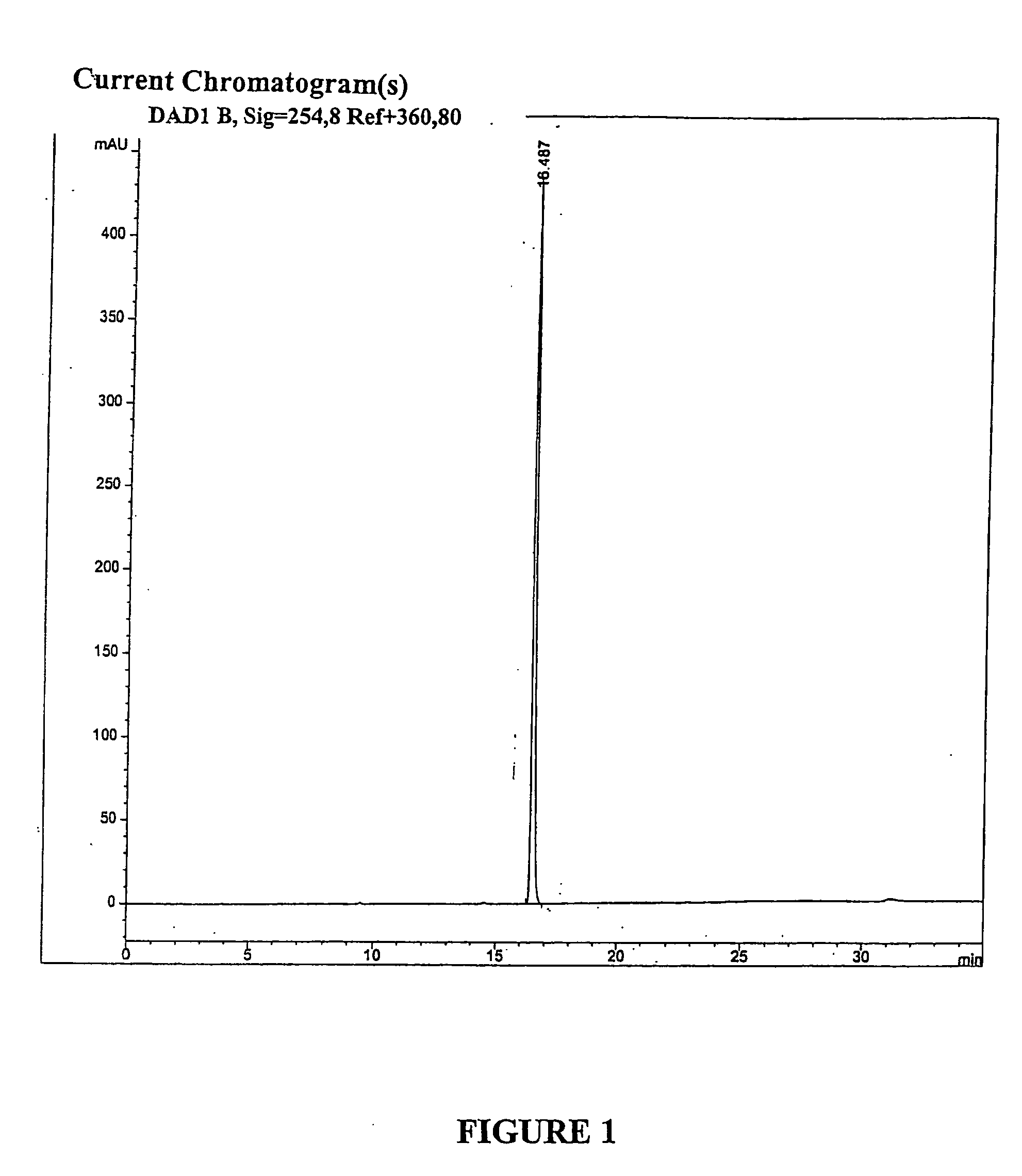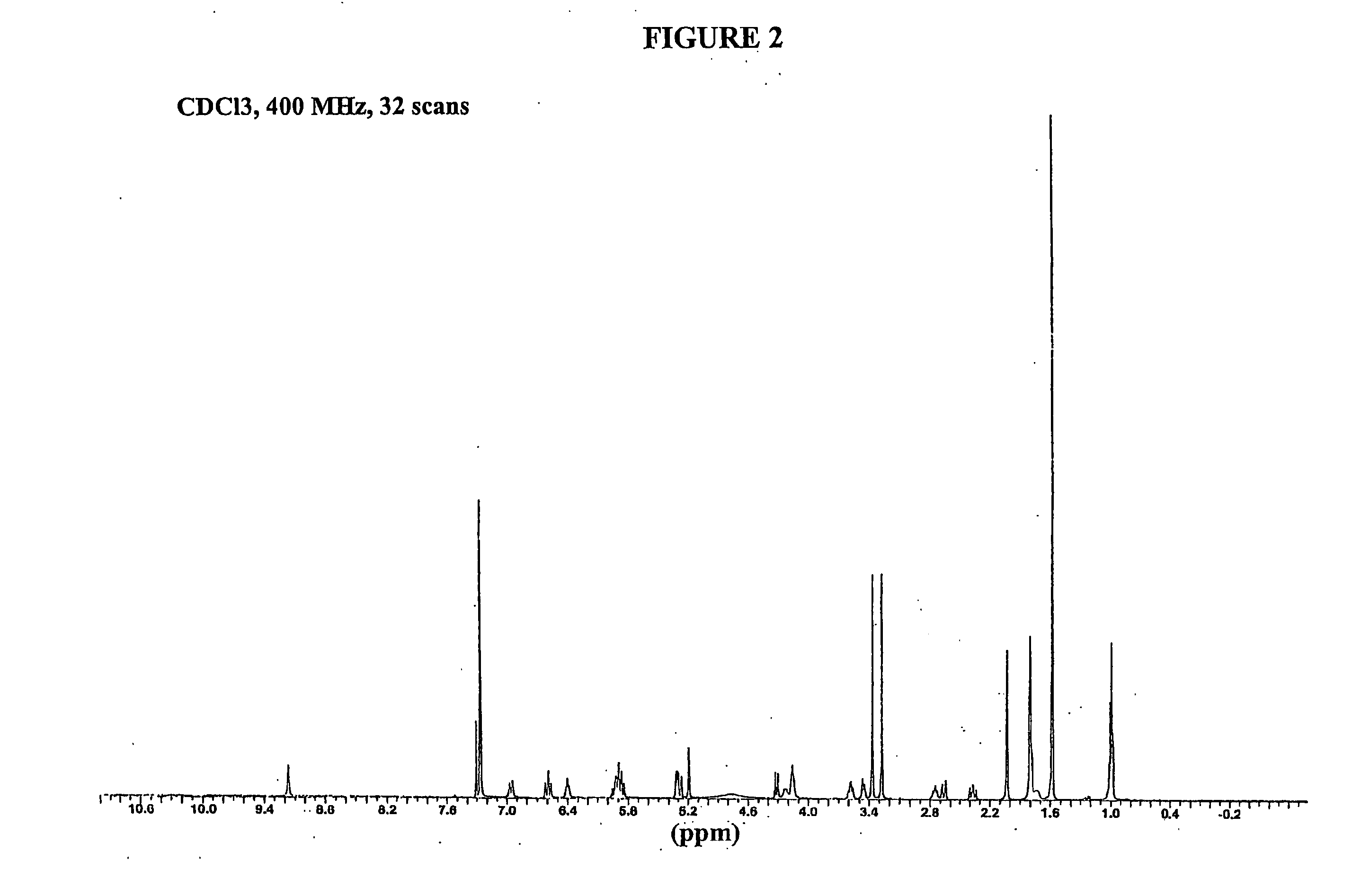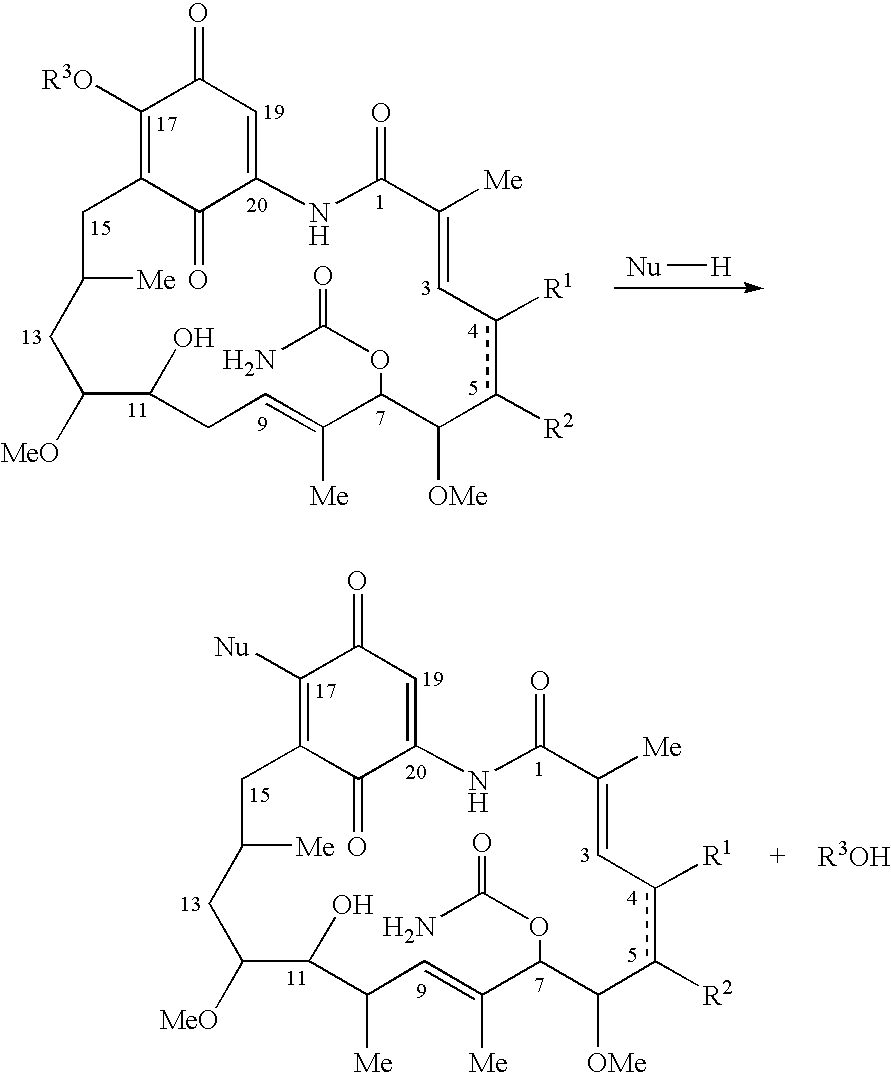Process for preparing 17-allyl amino geldanamycin (17-aag) and other ansamycins
a technology of amino geldanamycin and ansamycin, which is applied in the field of process for preparing 17allyl amino geldanamycin (17aag) and other ansamycins, can solve the problems of low yield, low purity, environmental toxicity, etc., and achieves high yield, reduced environmental and patient toxicity, and high purity
- Summary
- Abstract
- Description
- Claims
- Application Information
AI Technical Summary
Benefits of technology
Problems solved by technology
Method used
Image
Examples
example 1
Synthesis of 17-Allyl Amino Geldanamycin (17-AAG)
[0059] To 45.0 g (80.4 mmol) of geldanamycin in 1.45 L of dry THF in a dry 2 L flask was added drop-wise over 30 minutes, 36.0 mL (470 mmol) of allyl amine in 50 mL of dry THF. The reaction mixture was stirred at room temperature under nitrogen for 4 hr at which time TLC analysis indicated the reaction was complete [(GDM: bright yellow: Rf=0.40; (5% MeOH-95% CHCl3); 17-AAG: purple: Rf=0.42 (5% MeOH-95% CHCl3)]. The solvent was removed by rotary evaporation and the crude material was slurried in 420 mL of H2O:EtOH (90:10) at 25° C., filtered and dried at 45° C. for 24 hr to give 40.9 g (66.4 mmol) of 17-AAG as purple crystals (82.6% yield, >98% pure by HPLC monitored at 254 nm). MP 206-212° C. 1H NMR and HPLC are consistent with the desired product.
example 2
Crystallization of 17-AAG in Isopropanol
[0060] An alternative method of purification is to, instead of crystallizing in ethanol, dissolve the crude 17-AAG from example 1 in 800 mL of 2-propyl alcohol (isopropanol) at 80° C. or reflux (approximately 82.2° C.) and then cool to room temperature. Filtration followed by drying at 45° C. for 24 hr gives 44.6 g (72.36 mmol) of 17-AAG as purple crystals (90% yield, >99% pure by HPLC monitored at 254 nm). MP 147-153° C. 1H NMR and HPLC are consistent with the desired product.
example 3
Polymorph Conversion: Recrystallization of 17-AAG in Ethanol
[0061] An alternative method of purification is to slurry the 17-AAG product from example 2 in 400 mL of H2O:EtOH (90:10) at 25° C., filtered and dried at 45° C. for 24 hr to give 42.4 g (68.6 mmol) of 17-AAG as purple crystals (95% yield, >99% pure by HPLC monitored at 254 nm). MP 147-153° C. 1H NMR and HPLC are consistent with the desired product.
PUM
| Property | Measurement | Unit |
|---|---|---|
| Melting point | aaaaa | aaaaa |
| Melting point | aaaaa | aaaaa |
| Melting point | aaaaa | aaaaa |
Abstract
Description
Claims
Application Information
 Login to View More
Login to View More - R&D
- Intellectual Property
- Life Sciences
- Materials
- Tech Scout
- Unparalleled Data Quality
- Higher Quality Content
- 60% Fewer Hallucinations
Browse by: Latest US Patents, China's latest patents, Technical Efficacy Thesaurus, Application Domain, Technology Topic, Popular Technical Reports.
© 2025 PatSnap. All rights reserved.Legal|Privacy policy|Modern Slavery Act Transparency Statement|Sitemap|About US| Contact US: help@patsnap.com



